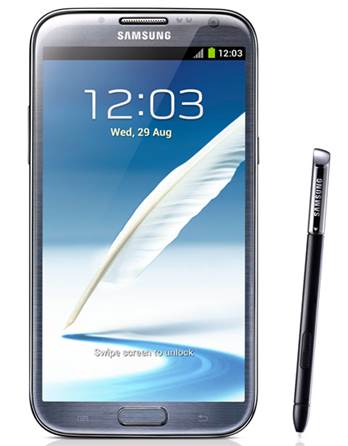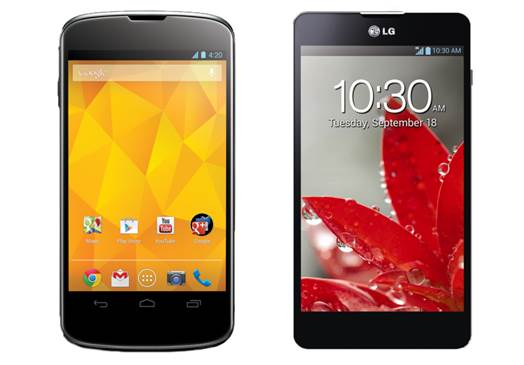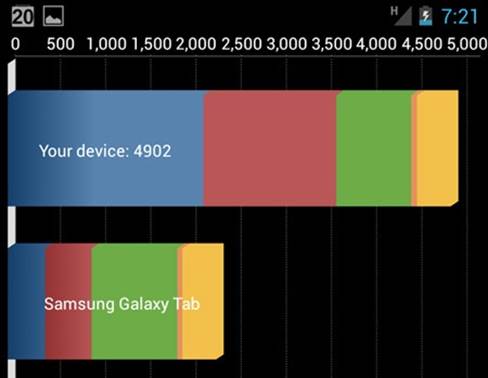Performance and battery life
Performance of Nexus 4 is something
curious. The phone is an “extreme” chipset that is operating everything on the
backstage: its 1.5GHz quad-core Snapdragon S4 Pro (APQ8064) as we see on LG
Optimus G, combining with Adreno 320 GPU and 2GB RAM. In the initial tests
between the high-class LG phone and the Samsung Galaxy Note II which is
mentioned above (which as 1.6GHz quad-core Exynos chip), S4 Pro ranks 1st.
And in the practical-using tests, we’re quite satisfied with the speed of
Nexus. It’s primarily fast, multi-tasking is smooth and we rarely have any
delay. In side-by-side using, it feels a little slower than Optimus G, but much
faster than Galaxy Nexus. Nexus of LG can deal with all of our requests easily.

Performance
of Nexus 4 is something curious
Google
Nexus 4
·
Quadrant (v2): 4,902
·
Vellamo (v2.0 HTML5): 1,236
·
AnTuTu: 10,122
·
SunSpider 0.9.1 (ms): 1,975
·
GLBenchmark 2.5 Egypt 1080p Offscreen (fps): 30
·
CF-Bench: 13,835

Google
Nexus 4
LG
Optimus G
·
Quadrant (v2): 7,628
·
Vellamo (v2.0 HTML5): 1,710
·
AnTuTu: 11,284
·
SunSpider 0.9.1 (ms): 1,283
·
GLBenchmark 2.5 Egypt 1080p Offscreen (fps): 31
·
CF-Bench: 14,398

LG
Optimus G
Samsung
Galaxy Note II
·
Quadrant (v2): 6,819
·
Vellamo (v2.0 HTML5): 2,482
·
AnTuTu: 13,539
·
SunSpider 0.9.1 (ms): 1,023
·
GLBenchmark 2.5 Egypt 1080p Offscreen (fps): 17
·
CF-Bench : 15,267

Samsung
Galaxy Note II
Before digging deeper into the tested
result you see above, we will say one thing: the tests not always tell the
whole story, and we understand that they don’t normally re-create real-life
use. We provide a standard testing set because we feel that it will be useful
to have a quantitative measurement when comparing the devices. Because Nexus 4 and
Optimus G are too identical in chipset and other components, the measurement of
both will be easy to compare or at least almost similar. But as you can see on
the table above, a number is absolutely in contrast to what we expect. In fact,
some of these result most noticeable is Quadrant and Vellamo) are still lower
than what we normally have from the dual-core Snapdragon S4 processor. It’s
fair to say, CF-Bench and GLBench don’t excess our expectation, and are pretty
significant, but in general we have to tear our hair out. (Update: we believe
that the partial result is the sub-product of the optimizations in Android 4.2 which
improve the speed and user experience but affect negatively to the tests. We
hope that this concern is solved on the future firmware update).

Because
Nexus 4 and Optimus G are too identical in chipset and other components, the
measurement of both will be easy to compare
We intend to shrug our shoulder and stop
thinking about this concern, but we also have the same problems with the other
Nexus 4 phone and many Nexus 10 devices. It’s easy to blame for the tests for
not being optimized on Android 4.2, but we never see these tests expose the
same problems with the other version of mobile OS when they’re still new. That
is to say, our units can be preloaded with a yet to-be -final firmware version
which can somewhat contribute to our dilemmas. We will receive a last update
before releasing, which will activate the screen lock utilities, so we hope to
have some extra options included (we will update the review if we see any
increments in terms of performance or testing result). However, you will
receive a bang-for-your-buck thing, and we don’t think that savvy users will disappoint.

We
have tested Riptide and it doesn’t miss any beat; the graphics is excellent and
we don’t have any problem
We have tested Riptide and it
doesn’t miss any beat; the graphics is excellent and we don’t have any problem.
When we play Need for Speed: Most Wanted, a game that is heavier in
graphics, we see some frame reduction and stutter throughout each level we
play. These problems don’t interrupt the game flow, but they’re still easy to
notice. Apart from these breakdowns, everything is fine, because there’s no
problem in displaying all the details, for example, the reflections that casts
the shadow onto the car and fine quality in the surrounding buildings and the
other landmarks in the game. Battery life is another part of performance that
makes us confuse. Because Nexus 4 uses the same 2,100mAh battery (and
power-friendly Krait chip) as Optimus G, we have expected to record the similar
running time. However, to our surprise, it’s noticeably worse in tests and
realistic using. The standard video test, including repeating a movie at 50% brightness
with Wi-Fi open (but no connection) and the normal notifications for email and
social media, has lasted within 5 hours 18 minutes before being out of battery.
The sundry tests – in which we surf web moderately, emailing, social media,
texting, shooting a few images and making some calls – mostly give us a whole
day use, but the general result will depend on how bright you set up the
screen. However, the experience we have with 2 tested phone are still totally
in contrast with Optimus G, which last for over 8 hours in the video test and 20
hours for moderate use.

Nexus
4 uses the same 2,100mAh battery (and power-friendly Krait chip) as Optimus G
We like to make calls on Nexus, because we
can hear the loud and clear voice from our friends. It doesn’t have noise and
none side of the conversation has difficult in listening to each other. At this
time, this stuff continues turning to be thrilling. While we satisfy with how
loud and clear the calls are, the speakerphone is another story. With the calls
as well as playing music, it’s remarkably softer than most of the compete
phones that we have tested recently and in several times we have to check the settings
carefully to make sure that we set it up as loud as possible. Besides, the
speaker grille is on par with the back cover of the phone, which makes the
sounds extremely muffled when you put the phone on a surface with the screen
facing upward. We also checked Nexus 4 with the in-ear Klipsch Imge S4A headphones
and see the relative volume but it’s obviously not the loudest kind we used to
hear. On the positive side, we don’t have any worry with the clarity or can be
able to hear high, midrange and low voice or not. Taking multimedia into
accounts, we should also mention that the screen and chipset have a role in the
flawless filming experience.